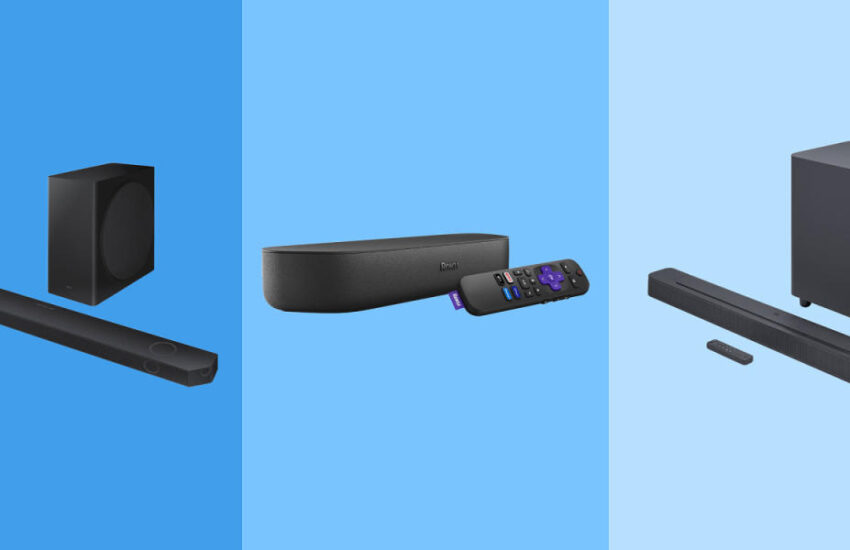Select independently determines what we cover and recommend. When you buy through our links, we may earn a commission. Learn more.
You may be wondering why you would ever need to buy a soundbar. If you’ve bought a great TV, you’ll expect to have good audio in the mix. But for most TVs, the audio you’re getting is a huge downgrade compared to what an external speaker can accomplish.
That’s partially because of the slim nature of today’s flatscreen TVs. You may have noticed TV actors seem to mumble their dialogue or car crashes in an action movie are less explosive than the sound of your kettle, it’s probably because your TV speakers aren’t up to the task.
I’m here to tell you that better audio is possible. I’ve worked as a gadget tester and home entertainment reporter for most of the past decade, with plenty of hands-on experience with soundbars, surround sound systems and TV audio. I have hands-on experience with a number of the models in this guide, and the industry knowledge needed to parse what’s worthwhile or good. No matter your budget we’ve brought together the best soundbars and speakers in one helpful guide.
SKIP AHEAD How we picked the best soundbars | The best soundbars and speakers | How to shop for the best soundbars and speakers
How we picked the best soundbars
When picking these suggestions, I drew on the advice of multiple sources from the audio hardware industry — cited further down in this guide — and kept the below criteria in mind:
-
Price: TV speakers can be a tricky proposition, given it’s easy to spend as much on one as you would the television itself. I focused on offering a range of options for different budgets while considering how extensive a multi-channel system should be for that price.
-
Immersive audio: Dolby Atmos, DTS:X and Sony 360 Reality Audio are all immersive audio formats. Each format helps sound designers better cater to the intricacies of the multi-channel audio systems in consumers’ homes. I looked specifically for models that supported these formats and were able to create virtual surround sound even without multiple separate pieces of hardware.
-
Bass output: The main thing lacking from TV audio is usually bass and low-frequency response, as flatscreen TV designs don’t easily fit hefty subwoofers. We made sure to include models with impactful bass or dedicated subwoofers included in the purchase.
The best soundbars and speakers
Best budget: Roku Streambar
Roku Streambar


The Roku Streambar packs both a Roku streaming player and a soundbar into one dedicated device, making it a neat solution for those tired of juggling various remotes and cables in their home entertainment setup. This entry-level model starts at $129, but is often discounted, and should offer a noticeable upgrade to average TV audio. It also replaces your television’ interface with a user-friendly and customizable Roku TV platform.
Channels: 2.0 | Dimensions: 2.4 x 14.0 x 4.2 in. | Dolby Atmos: No | Weight: 2.4 lbs. | Connectivity: USB, HDMI, Ethernet, Wi-Fi, Bluetooth, Optical | Voice Controls: Roku Voice, Works with Apple HomeKit, Amazon Alexa, Google Assistant | HDMI: ARC
Best budget with subwoofer: Sony HT-S400
Sony HT-S400
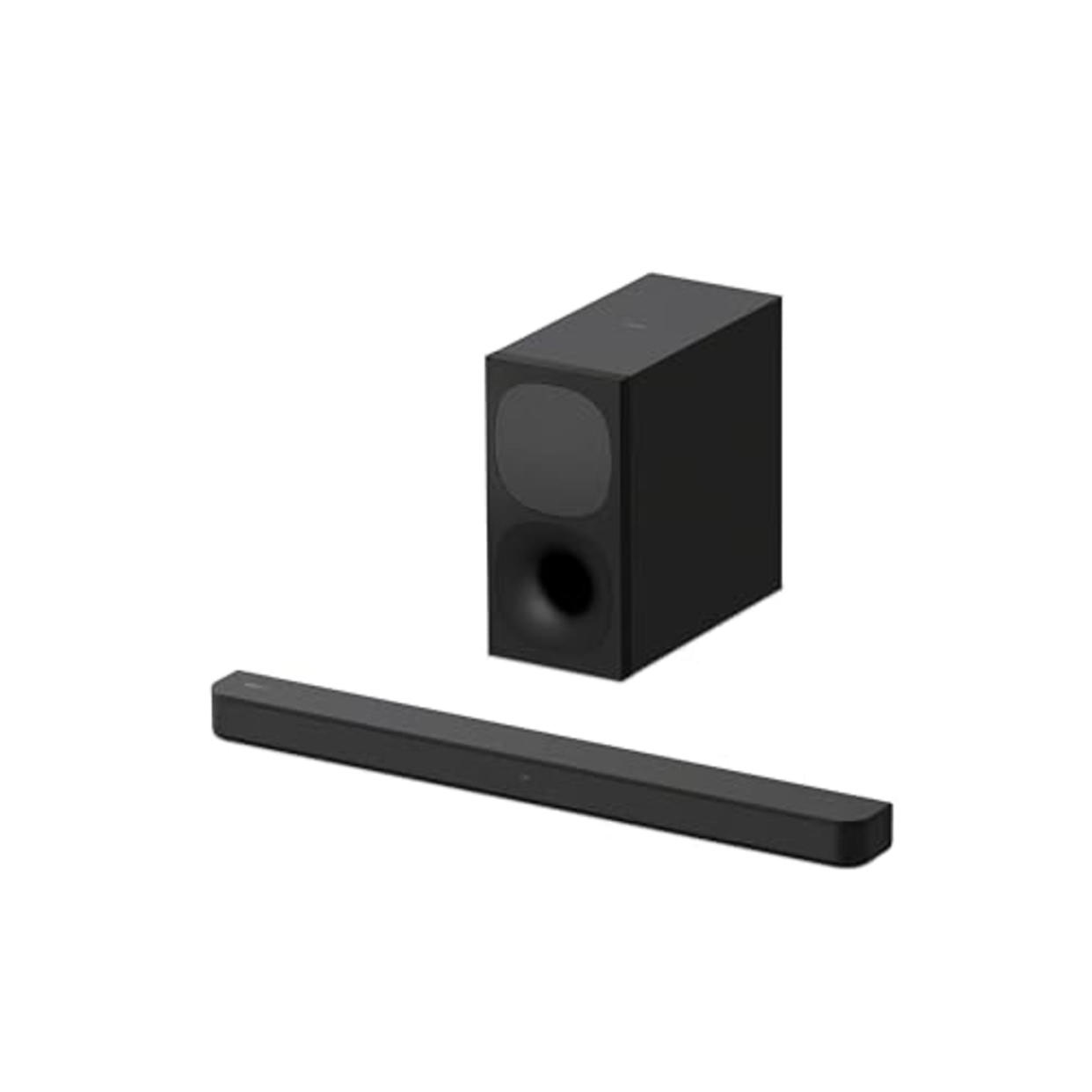

You don’t need to spend thousands to get a multi-unit system, as you can see with the Sony HT-S400. This budget setup throws in both a basic soundbar and a wireless subwoofer, which allows you to space out the audio kit in a manner to your liking. It also has the heft needed to make bass frequencies audible. ARC support provides two-way device communication when connecting to your TV over HDMI, meaning that your TV speaker remote can control your TV and vice versa.
Channels: 2.1 | Dimensions: 2.6 x 35.5 x 3.5 in. (soundbar), 15.25 x 7.6 x 15.75 in. (subwoofer) | Dolby Atmos: No | Weight: 5.5 lbs. (soundbar), 16.2 lbs. (subwoofer) | Connectivity: USB, HDMI, Bluetooth, Optical | Voice Controls: No | HDMI: ARC
Best budget with Dolby Atmos: Sony HT-S2000
Sony HT-S2000
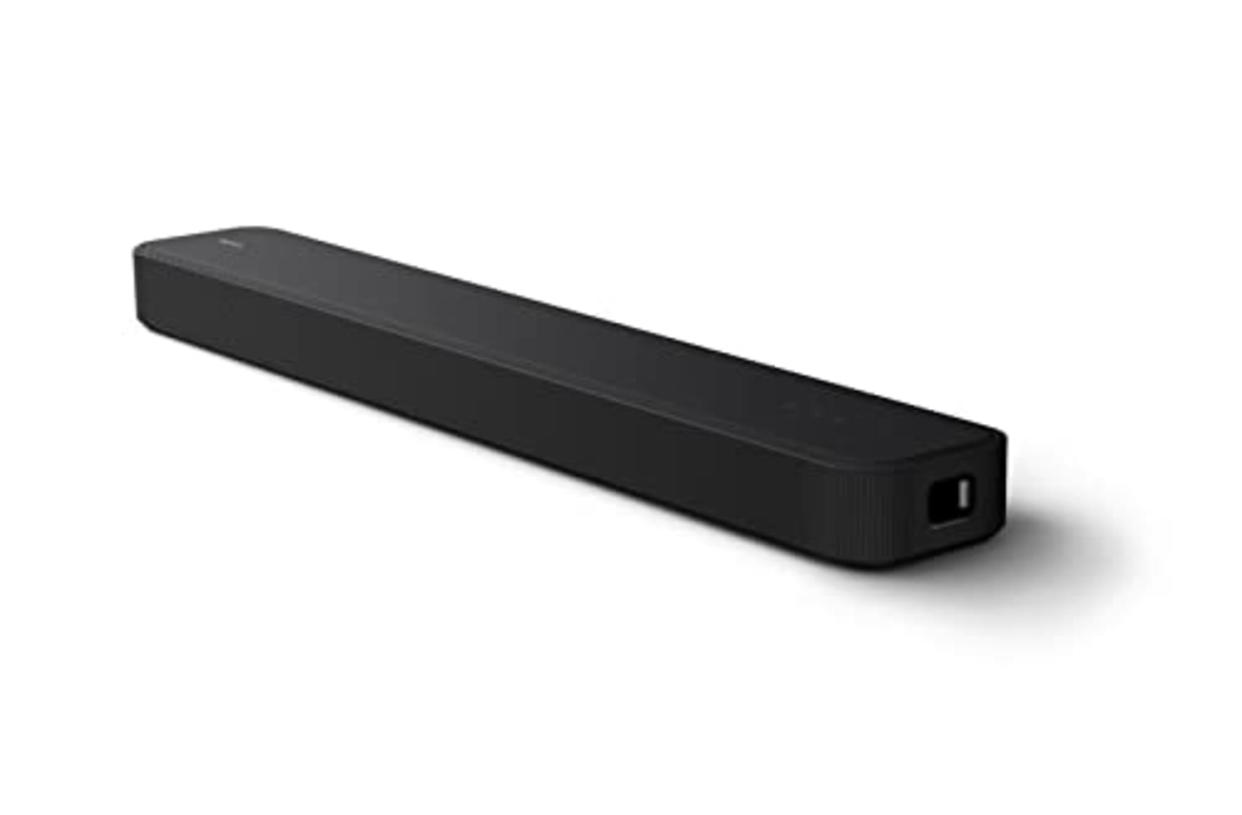

This step-up Sony model doesn’t include a separate subwoofer, but you might not need one. With 3.1 channels, you’ll get a good spread of mid-range audio and bass output. It also supports the premium Dolby Atmos audio format, which is encoded with sound channels for three-dimensional audio. This allows sound designers to place discrete audio objects within that soundscape, like a car coming closer towards you or a hail of arrows descending into the room. Not all content comes with Dolby Atmos, but it’s very common for new 4K movies and content on streaming services — you won’t get the full effect on a 3.1 system, rather than a 5.1/7.1 system, but it’s a noticeable perk.
Channels: 3.1 | Dimensions: 2.62 x 31.5 x 5 in. | Dolby Atmos: Yes | Weight: 8.3 lbs. | Connectivity: USB, HDMI, Bluetooth, Optical | Voice Controls: Google Assistant, Works with Alexa | HDMI: ARC
Best mid-range: JBL Bar 500 5.1 Soundbar
JBL Bar 500 5.1 Soundbar


-
JBL Bar 500 5.1 Soundbar $ at Amazon
-
JBL Bar 500 5.1 Soundbar $ at Best Buy
-
JBL Bar 500 5.1 Soundbar $ at Target
This two-part sound system is a great pick for everyday audio listeners, with a handful of smart features you won’t get with sub-$500 models. For one, there’s Dolby Atmos support, with the 5.1 channel system to properly recreate its immersive audio design. But you’ll also get MultiBeam, which helps to direct the sound sideways instead of simply forward, allowing for a soundscape that travels across the room. Support for 4K Dolby Vision passthrough means you can even connect the speaker to a games console and transfer its signal to the television. If you’re short on ports anyone with a selection of Alexa speakers can link them up with the JBL Bar for multi-room audio.
Channels: 5.1 | Dimensions: 2.2 x 40 x 4 in. (soundbar), 17.3 x 12 x 12 in. (subwoofer) | Dolby Atmos: Yes | Weight: 6.2 lbs. (soundbar), 22 lbs. (subwoofer) | Connectivity: USB, HDMI, Bluetooth, Optical, Wi-Fi | Voice Controls: Works with Amazon Alexa, Google Assistant, Siri | HDMI: eARC
Best overall: Samsung HW-Q800C
Samsung HW-Q800C
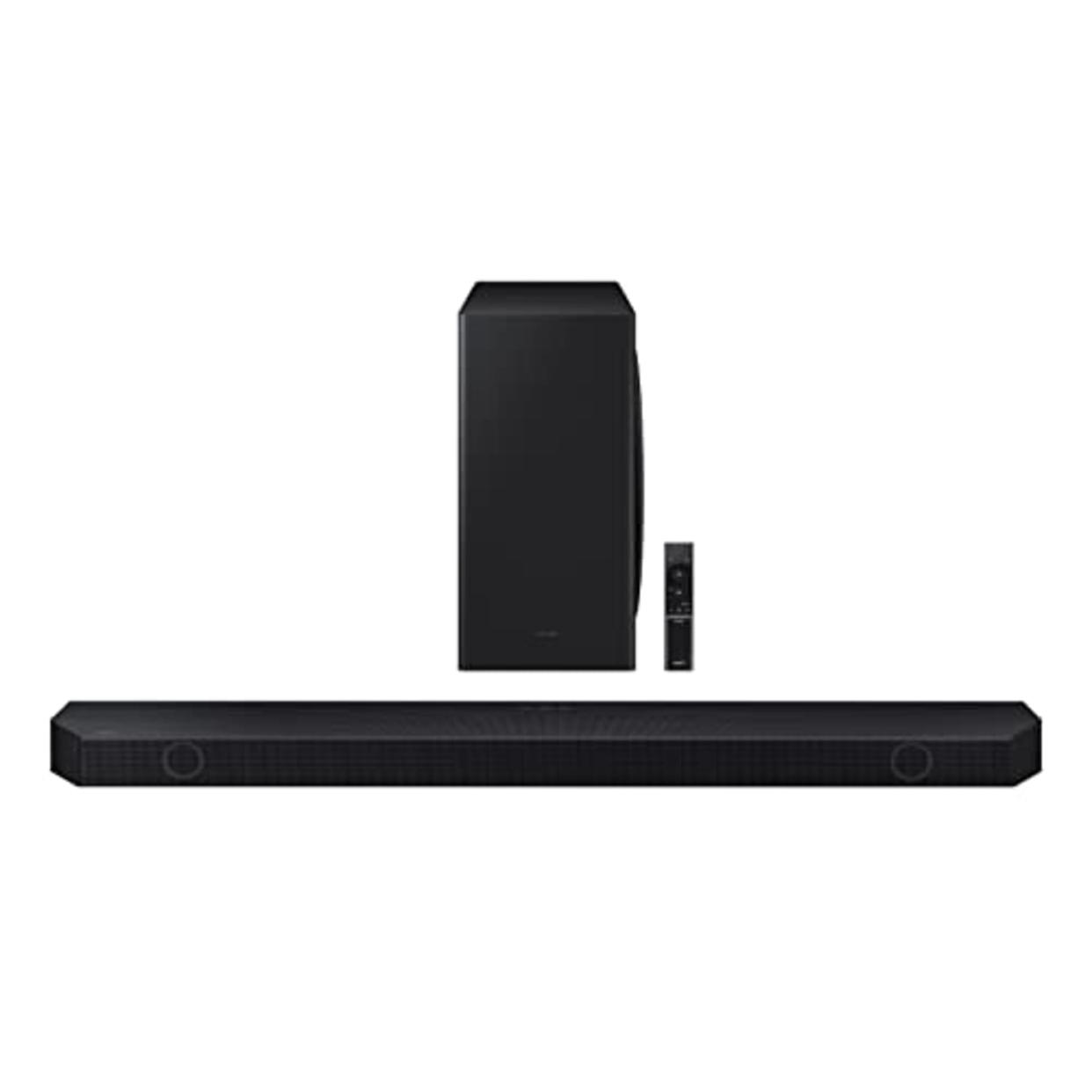

Samsung HW-Q800C $ at Amazon
Samsung’s Q Series is a great place to look for a new TV speaker, especially if you’re sporting one of Samsung’s OLED or QLED TVs. But even if you don’t have a Samsung TV, the HW-Q800C is a brilliant choice for the price, packing in an impressive 5.1.2 channel system that includes an external subwoofer and Dolby Atmos audio support. Better yet, it’s easy to add other subwoofers if you ever want to unleash a real surround sound system.
Channels: 5.1.2 | Dimensions: 2.4 x 43.7 x 4.7 in. (soundbar), 15.9 x 8.3 x 15.9 in. (subwoofer) | Dolby Atmos: Yes | Weight: 11.2 lbs. (soundbar), 21.6 lbs. (subwoofer) | Connectivity: HDMI, Bluetooth, Optical, Wi-Fi | Voice Controls: Works with Amazon Alexa, Google Assistant, Siri | HDMI: eARC
Best standalone soundbar: Sonos Arc
Sonos Arc


With a 5.0.2 sound system, the Sonos Arc offers three front-facing drivers and two that fire upwards to add a third dimension to your television’s sound. It’s also aided by Dolby Atmos support and Sonos’ incredible reputation for audio fidelity, whether you’re blasting through an action movie or drawing out the instrumental soundtrack on a thoughtful documentary. Other soundbars may have the same number of channels, but they won’t all hit quite as hard as with the Sonos Arc. Just note that it doesn’t come with a subwoofer for the price, though you can purchase a Sonos Sub separately for the full 5.1.2 experience.
Channels: 5.0.2 | Dimensions: 3.43 x 45 x 4.56 in. | Dolby Atmos: Yes | Weight: 13.8 lbs. | Connectivity: HDMI, Optical, Wi-Fi, NFC | Voice Controls: Works with Amazon Alexa, Google Assistant, Siri | HDMI: ARC
Best splurge: Sennheiser Ambeo Plus
Sennheiser Ambeo Plus
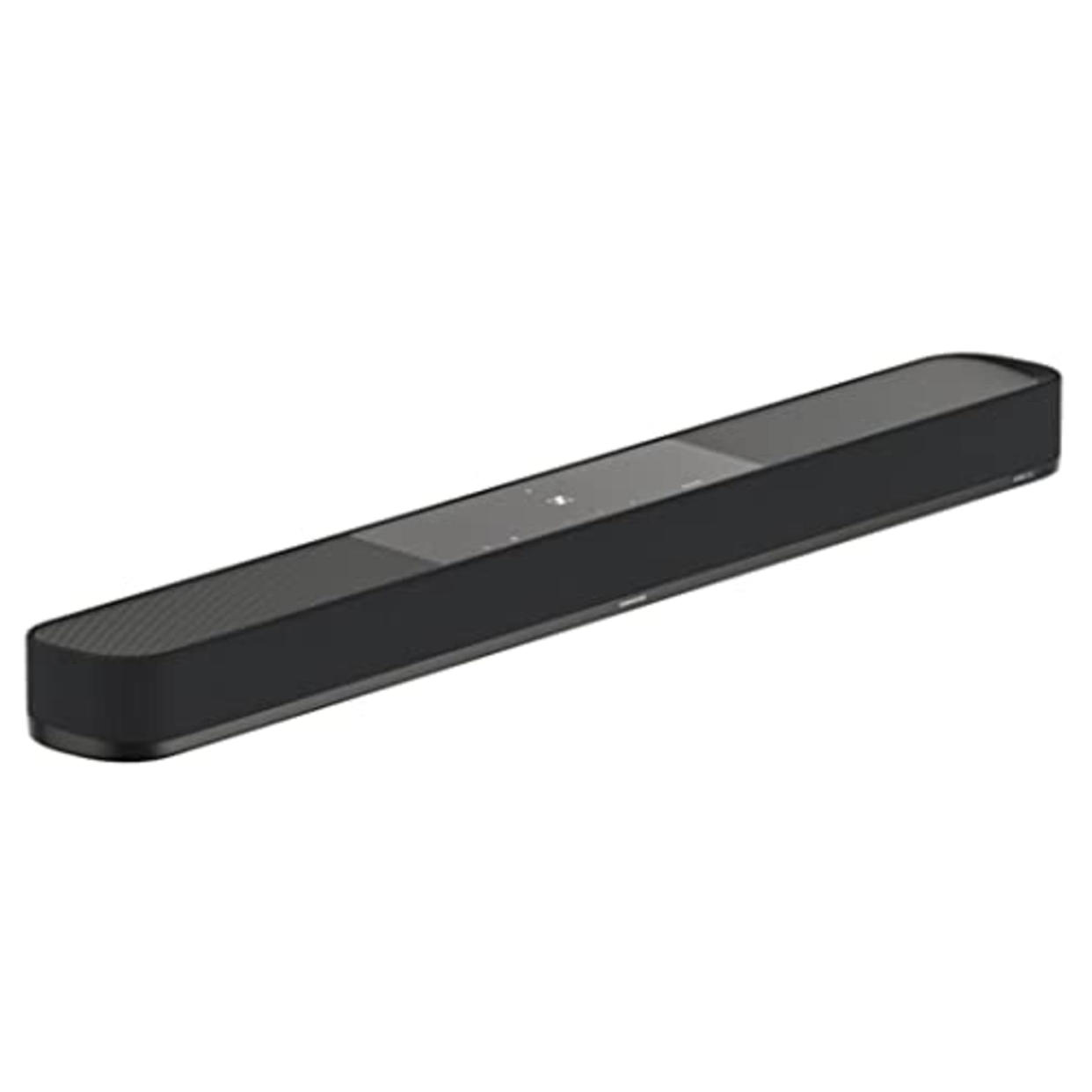

The Sennheiser Ambeo Plus is a great choice if you want all of the latest connectivity standards, including AirPlay 2, Spotify Connect, Chromecast and more.The 7.1.4 channel system is an incredible thing to put in a single soundbar, with a multitude of drivers emitting sound toward you, the ceiling and everything else in the room. There’s some virtual wizardry going on to get to that 7.1.4 specification — technically just seven full-range speakers and a pair of 4-inch upward-firing subwoofers — but it’s hard to argue with the result. The bass is a little more restrained than in the top-range Ambeo Max ($2500 compared to this model’s $1500 price tag) but it’s a fantastic audio experience with a stylish exterior. Just one recommendation: pair it with a handful of Ambeo Sub units and enjoy a one-person home cinema setup that feels like a cinema.
Channels: 7.1.4 | Dimensions: 3.03 x 41.38 x 4.76 in. | Dolby Atmos: Yes | Weight: 13.89 lbs. | Connectivity: USB, HDMI, Optical, Ethernet, Wi-Fi | Voice Controls: Works with Amazon Alexa, Google Assistant | HDMI: eARC
How to shop for the best soundbars and speakers
Choosing the right speaker for you will depend on a host of factors, from your personal hardware budget and TV tastes to the size and scale of the room your TV is in. To that end, we talked to two home entertainment experts to get a better sense of what a prospective speaker shopper should look for.
TV speaker audio channels
When shopping around for sound systems, you may have seen these series of numbers and wondered what exactly they meant. 2.1, 3.1.2, 5.1 and 7.1 are all kinds of multi-channel speakers that speak to the number of channels and how they are arranged.
In 3.1.2, you’ll get three center channels, one subwoofer for bass output and two height-oriented channels. In a 2.1 system, that’s only two center channels and one subwoofer, without height-oriented audio. TVs tend to come with a two-channel stereo system (so, 2.0 in this terminology). A good 3.1.2 audio system allows for a meaningful upgrade that gives your audio a sense of direction and scale, though a proper 5.1.2 or 7.1.4 system will make your movie nights feel truly cinematic.
Consider your space
John Couling, Senior Vice President of Entertainment at Dolby Laboratories, says to make sure your multi-channel system is appropriate for the size of your space: “A higher audio channel configuration (like 5.1.2) will work great in a larger room, like the living room in a single family home, as it will provide a more encompassing sound field needed for the space. Alternatively, a more compact soundbar (say a 3.1.2 or 2.1 system), which features less audio channels, may work better and sound equally impressive in smaller rooms, which is a great option for those living in apartments or condos.”
TV speaker manufacturers will often try to sell you on ‘virtual’ surround sound, despite not having the speakers to really create that effect — essentially using an algorithm to upscale audio and a little directional trickery to make you think you’re experiencing surround sound. Couling praises these “advancements in psychoacoustic processing” — psychoacoustic being the study of sound perception in the human body. It won’t have the full effect of a physical surround sound system roaring around you, but can offer something like the immersion of high-end systems at a more affordable price point. As Couling says, “This means immersive audio capabilities can be found in sound bars at really compelling prices. This is important because it means great sound and immersive audio is now accessible to a wider audience.”
Pay attention to bass
Ole Moltsen, a product manager at audio specialist Bang & Olufsen recommends looking for speakers with “bass capability”, as this is usually what’s lacking from TV speakers, but admits that “it can be quite difficult for people to compare technical specifications between brands and products”, which makes product reviews or buying guides like these usually the best place to start.
For Couling, the real feature to look for is “immersive audio capabilities”, but agrees that extra bass is a major reason to upgrade to a soundbar: “If you want extra bass, make sure the soundbar comes with a sub or consider adding one to your purchase if it doesn’t. Many will also come with rear speakers that you can pair with your soundbar, which are a great addition.”
Meet our experts
At NBC Select, we work with experts who have specialized knowledge and authority based on relevant training and/or experience. We also take steps to ensure all expert advice and recommendations are made independently and without undisclosed financial conflicts of interest.
-
John Couling, SVP of Entertainment at Dolby Laboratories, is an industry specialist and former Dolby applications engineer now overseeing the company’s global partnerships strategy.
-
Ole Moltsen, Product Manager at Bang & Olufsen.
Why trust NBC Select?
Henry St Leger has worked as a gadget reporter since 2017, covering the latest developments in consumer hardware, from TVs and streaming players to smart speakers and VR headsets. They previously worked as the Home Cinema Editor at TechRadar and now freelance for NBC Select, Insider and The Independent.
Catch up on NBC Select’s in-depth coverage of personal finance, tech and tools, wellness and more, and follow us on Facebook, Instagram, Twitter and TikTok to stay up to date.

